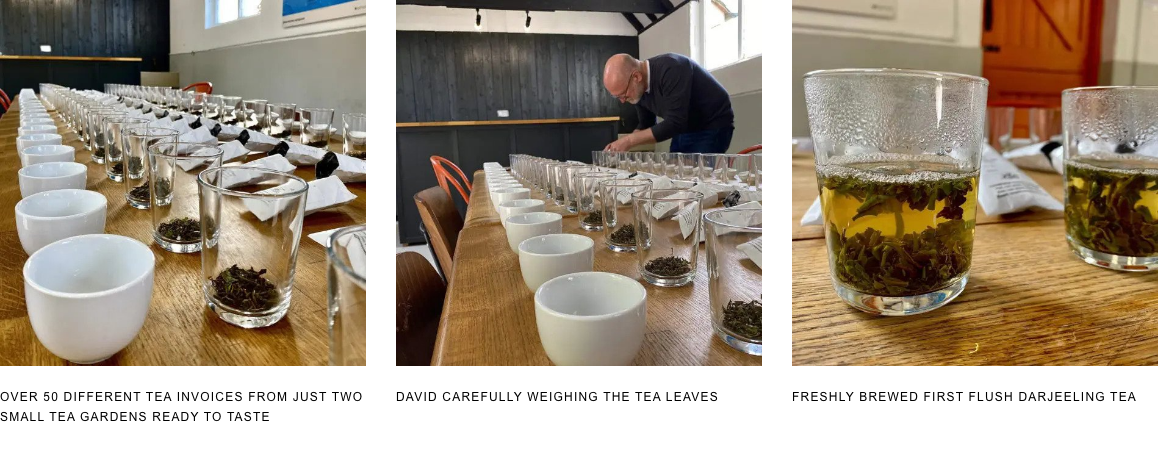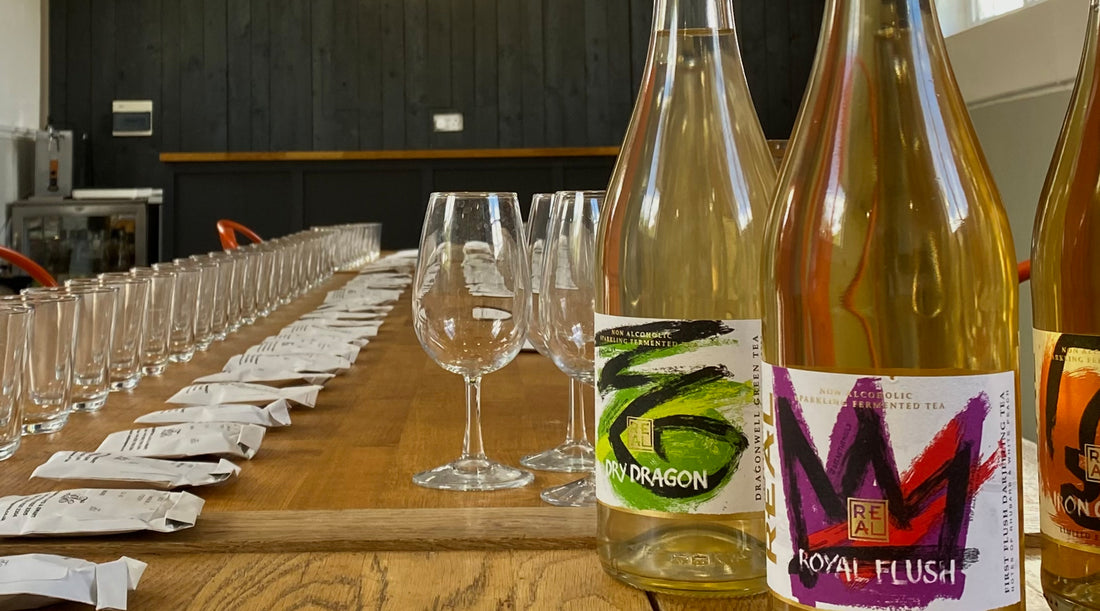Each year, as spring gradually becomes summer, REAL Founder David and Head Brewer Guillermo carry out a tea tasting to sample the best of the year’s Darjeeling tea harvest before choosing the exact pick to buy for the year ahead to use in our natural fermentation process for Royal Flush Sparkling Tea.
The Darjeeling harvest begins as the winter ends from February onward where the air in India starts to become increasingly humid. Until this point, the tea plants have been dormant and are awakened by the moisture in the air.
The tea bushes gradually progress through four distinct seasons, known as flushes. First flush Darjeeling tea is harvested in the spring, the second flush at the beginning of summer, the third during the monsoon season and the fourth in the autumn before the harvest ends in November.
Why is First Flush So Special?
The first flush is the very first pick of the season, harvested when just the first tips of the tea emerge in spring. These young and fresh leaves have characteristically delicate, fruity notes. Just the bud and the first leaf from the plant are picked within the first 3-4 weeks of the growing season. It is then withered, rolled, gently oxidised and dried with great care to preserve its elegant flavour.
How is tea categorised and sold?
There are many intricacies to consider when purchasing tea. The process differs depending on how you intend to use the leaves.
At REAL we are extremely particular about the tea leaves we buy; the leaves must be of a certain quality to ensure the best flavour and integrity when fermented to make our range of sparkling teas.
Royal Flush has notes of rhubarb and white peach and is the perfect alternative to Champagne and sparkling wine. The loose-leaf Darjeeling we use to create this premium sparkling comes from a single tea garden at the bottom of the lesser Himalayas in India.
Tea of this quality is classified by three categories:
- The flush
- The tea garden
- The period of time it was harvested during (known as invoices)
Each tea garden picks their first flush harvests in sections each day and records exactly when these were picked. The tea is then sold according to the pick dates and invoice number, usually between 1-30 days. The earlier the pick date the more expensive the tea is.
The fruit and floral character notes of Royal Flush we specifically look for can vary wildly between invoices, meaning we buy the tea that represents the flavour profile by tasting the Darjeeling from each day of the first flush harvest.
How to conduct a tea tasting?
The different tea invoices are laid out in chronological order next to both a cup to brew the tea in and a small bowl to transfer the brewed liquid into.

David will carefully weigh the tea and brew it with a precise amount of water. To make sure that the tasting is consistent, the water is brewed to a set temperature and each vessel of tea brewed for exactly the same amount of time.
David and Guillermo first look at the dried loose tea in detail and analyse the quality of the leaves as these tell you a huge amount about the tea before you even taste it. Once brewed, they smell the teas to identify initial flavour notes and aromas.
Finally, they taste the tea. Using a large spoon, they scoop a small amount from the bowl and slurp it in the same way that you would during a wine tasting. When tasting tea in this way you should suck air into your mouth as you sample the liquid to aerate it. This aeration further activates the flavours and character notes to provide an even taste profile of the tea.
How does the weather affect the tea harvest?
The quality and character of tea leaves is affected by even the smallest changes in weather and environmental conditions. By separating each harvest into invoices, you can trace even the most subtle changes in flavour across the harvest.
Much like the terroir in vineyards, the amount of sun, rain and wind each day as well as temperature and even soil quality affects what character notes are presented in the tea gardens harvest. David and Guillermo meticulously taste each invoice from a number of tea gardens within the same region to ensure that we only use the very best tasting leaves with exactly the right character notes to ferment with to create our range of non alcoholic sparkling teas.

